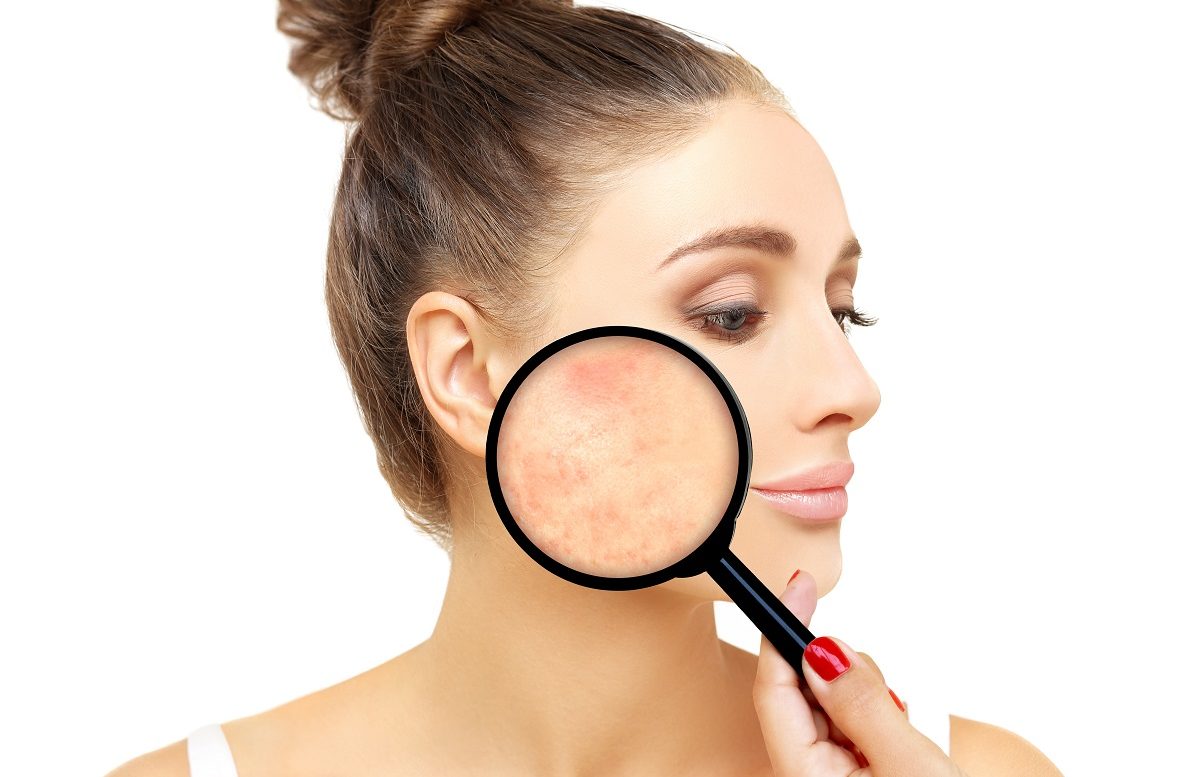Skin scars are a regular and inevitable occurrence. Many live with old scars – whether from…

Everything You Need to Know About Atrophic Scars
Whether you suffered from severe acne breakouts that left numerous scars on your face or shoulders or scraped your knee walking home from school as a kid, chances are you have accumulated at least a couple of scars throughout your life. Unfortunately, not all scars are the same, and if you are looking for ways to reduce the appearance of scarring, you need to know what type of scar you are dealing with.
The National Health Service (NHS) recognizes five types of scars: normal fine-line, keloid, hypertrophic, atrophic (sometimes called “pitted” or “sunken”), and scar contractures. This article focuses on atrophic scarring: what it is, types, causes, and how to treat these scars.
What Is Atrophic Scarring?
An atrophic scar is an indented scar that forms when a wound heals below your normal layer of skin. This is caused by insufficient collagen or damage to the tissues underneath the skin that prevents your body from healing the wound to your normal skin level.
These types of scars are known for their crater-like appearance and are very common. While these scars are not dangerous, they can become a point of insecurity for many people.
Types of Atrophic Scars
There are three types of atrophic scars, each with a slightly different appearance.
Icepick Scars
The first type of atrophic scar is called an “ice pick scar.” These scars are characterized by a narrow, deep, sometimes v-shaped appearance. This is the most common type of atrophic scar, accounting for 60-70% of all atrophic scarring cases.
Boxcar Scars
A boxcar scar has a flat bottom and defined borders—almost like a small pothole in a paved road. This type of scar accounts for 20-30% of atrophic scars, making it the second-highest percentage.
Rolling Scars
The final type of atrophic scar is a rolling scar. Unlike icepick or boxcar scars, rolling scars do not have distinct edges and tend to be wider. These scars make up the final 15-25% of atrophic scars.
Causes of Atrophic Scarring
As mentioned, an atrophic scar forms when the skin cannot fully regenerate the lost tissue from a wound.
Most commonly, atrophic scarring is the result of severe acne or chickenpox. However, these scars may also result from other traumas to the skin, including injury or surgical cosmetic procedures (such as removing a mole).
Can Atrophic Scars Be Removed?
Like many other types of scars, completely removing atrophic scars can be incredibly challenging—especially when considering old scars. Additionally, atrophic scars do not “fill in” or disappear over time, as they are characterized by a missing portion of tissue that the body simply heals around.
However, this does not mean there is no way to reduce the appearance of your scars. Cosmetic services—such as microneedling, chemical peels, and laser therapy—can help decrease the indenting appearance of these scars and re-level the skin.
How Dermatologists Treat Atrophic Scarring
While most home remedies may not be very effective for atrophic scars, there are several in-office treatment options that you can get from a qualified dermatologist that can dramatically reduce their appearance.
Here are some of the treatment options for atrophic scars. Keep in mind that there are other solutions that may not be mentioned here that your healthcare provider or dermatologist may recommend for your scars. Always consult a qualified healthcare professional to determine your best option before seeking treatment.
Chemical Peels
A chemical peel is a treatment that relies on the topical application of chemicals that help to exfoliate and remove the damaged layer of skin. This leaves you with a fresh new skin layer as your outer layer peels away. This peeling process is also known as “skin resurfacing.”
Fillers
Fillers are injections that can help raise the indented scars to match the level of the surrounding skin. This helps to even out your skin and reduce the appearance of atrophic scarring.
Subcision
For this treatment option, a qualified healthcare provider uses a needle to loosen the area around your scar to create a new wound. This gives the scarred area a chance to heal fully and fill in the area of missing tissue.
Dermabrasion
This treatment is an older technique in which a healthcare provider uses a motorized device with an abrasive tip to refinish the skin’s surface. This re-induces the healing process and allows your body to form new collagen and fill the indented scar.
Microneedling
Microneedling, also known as skin needling, works by regenerating a new healthier collagen layer under your outer layer of skin.
To do this, your dermatologist will disinfect and numb the area of your scarring and use a specialized roller with very fine needles to puncture the scarred tissue many times. This helps promote improved production of collagen and elastin fiber, which helps to reduce the appearance of atrophic scarring by filling in the indent.
Laser Therapy
Another treatment option for atrophic scarring is laser therapy (or laser treatment). Lasers can be very useful in helping to treat atrophic scarring. However, it is generally not recommended for icepick scars, as they are very narrow and deep—therefore, they are much more challenging to remove with a laser.
Combined Therapy
The final treatment method for atrophic scarring relies on combining the above-mentioned options. Many times, areas of severe atrophic scarring may require different approaches to heal effectively. Similarly, your healthcare provider may recommend opting for the least invasive treatment options first and only begin some more advanced methods on the areas that need extra attention.
Keep in mind that all of these treatment options have differing levels of success in reducing the appearance of atrophic scarring. Additionally, not all of these treatments will be readily available in all clinics. If you want to begin treatment for atrophic scarring, it is always best to consult a qualified healthcare professional to determine the best option for your situation.
What’s the Best Treatment for Atrophic Scars?
Unfortunately, there is no end-all-be-all “best” treatment option for atrophic scars. This is because each scar is different, and the best treatment for an individual scar will depend on several factors. Some examples include the following.
- The initial cause of the scar
- The severity of the scar
- The location of the scar on the body
- The age of the scar tissue
- The specific characteristics of the scar
- The individual’s other medical history—including past treatments and medications
So, then, how do you know what treatment option is best for your atrophic scars? Truthfully, the best way to determine the ideal treatment solution for your scars is to consult a qualified professional and get a personalized treatment plan.
Hannah Vargas is a nationally recognized skin care specialist and cosmetic surgeon that offers a full range of innovative skin rejuvenation services at Vargas Face & Skin Center. Schedule a virtual consultation today to begin discussing treatment options for your scars!






This Post Has 0 Comments